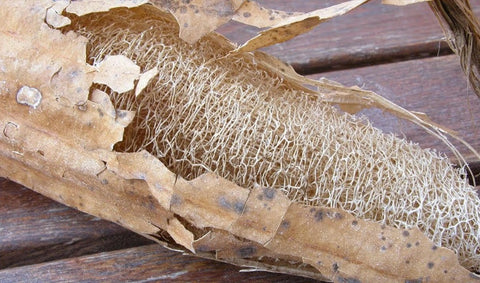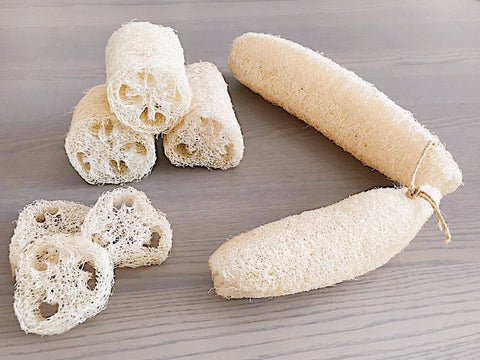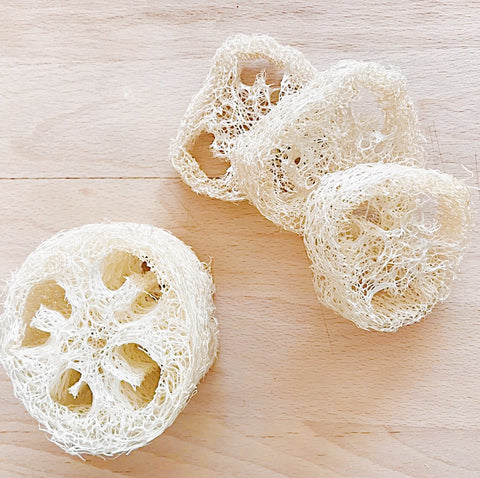First of all, let’s clarify exactly what a loofah is: it does not come from the sea. Loofah is actually a vegetable in the gourd family. The squash is picked, dried and skinned. What remains is what you see below and in bathtubs around the world. It’s even believed to have been used by Egyptians as a sponge! You can cut the full loofah plant into pieces based on your specific needs or purchase already cut.

In the shower
The most commonly known use is in the shower. And there’s good reason!
- Exfoliate: The loofah sponge is composed of slightly rough fibers that are very helpful to exfoliate your skin. It is extremely beneficial in eliminating dead skin cells to achieve smooth and glowing skin, particularly when skin is especially dry and flaky in the winter months.
- Loofahs can also help enhance circulation and encourage pores to expel oil and other impurities.
In the kitchen
A lesser known use is in the kitchen to wash dishes. If you use a traditional kitchen sponge, did you know it’s likely made of some form of plastic? Also, did you know it’s recommended to replace your traditional sponge every 2-4 weeks? When looking for a zero waste sponge alternative, the Loofah is a clear stand out considering this!
- The loofah has become one of our favorite dish sponges for pots, pans and even wine glasses!
- Loofah sponges are great for cleaning almost everything, anything that needs scrubbed but can't withstand abrasive steel wool.
*If used for both shower and kitchen, be sure to use 2 separate loofahs!
Soap dishes
Loofah’s can actually be cut into any shape and used for a multitude of purposes. We started using thin slices as zero waste soap holders and love them!
Environmental impact
Loofahs are completely biodegradable. You can just throw it in the compost when it reaches the end of its life! The loofah is one of the best zero waste sponges out there!
Care
New unused loofah can be stored for years if kept dry. It needs to be covered where dust won't settle on the surface. Working loofah sponges will last a surprisingly long time if they are allowed to dry between uses, usually a few months, but we do recommend changing every 1 month. Here’s how to care for your loofah to ensure it stays clean and effective:
- Remember to soak the loofah in water briefly before using for the first time.
- Dry daily: after having used your loofah, rinse and let it dry in a location away from the humidity of the shower, to ensure it dries completely between uses. For maximum conservation, after use, apply soap and rinse again before leaving to dry.
- To eliminate any bacteria, you can boil in water, wash in the washing machine at a high temperature (with towels for example), or put damp loofah in microwave for 10-20 seconds. Ideally, disinfect once per week.
- As with every sponge, the loofah is mean to be used for a limited period before being replaced. In any case, when cared for as suggested above, you should be able to use a single loofah for an entire month before replacing.


